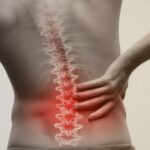Introduction
Chiropractors are healthcare professionals who focus on diagnosing and treating musculoskeletal problems, especially those related to the spine. Their approach emphasizes manual therapies, spinal adjustments, and natural healing without surgery or drugs. Chiropractic care is commonly used to address a variety of physical conditions that affect joints, muscles, and nerves. Many people turn to chiropractors for pain relief, improved mobility, and overall wellness.
Back Pain
One of the most common reasons people visit chiropractors is for back pain. Whether caused by poor posture, muscle strain, disc issues, or spinal misalignment, chiropractic adjustments can help reduce discomfort and improve flexibility. Chiropractors use spinal manipulation, soft tissue techniques, and exercise advice to relieve both acute and chronic back pain.
Neck Pain
Neck pain often results from prolonged computer use, sleeping in poor positions, or whiplash injuries. Chiropractors gently adjust the cervical spine to relieve tension and restore range of motion. Neck adjustments can help reduce stiffness, headaches, and upper back discomfort associated with misaligned vertebrae.
Headaches and Migraines
Tension headaches and some migraines can be linked to spinal misalignment or neck strain. Chiropractic care helps by:
- Reducing muscle tension
- Improving blood flow
- Correcting posture
- Minimizing nerve irritation
Regular chiropractic visits may lessen headache frequency and intensity.
Sciatica
Sciatica is a condition where the sciatic nerve becomes compressed or irritated, often causing sharp pain from the lower back through the buttocks and down one leg. Chiropractors treat sciatica through:
- Spinal decompression
- Targeted adjustments
- Stretching techniques
This helps relieve nerve pressure and promote healing.
Joint Pain in Shoulders, Hips, and Knees
Chiropractic care isn’t limited to the spine. Chiropractors can address joint issues in areas like:
- Shoulders (rotator cuff strain, frozen shoulder)
- Hips (alignment problems, mobility loss)
- Knees (arthritis, overuse injuries)
Treatments may involve joint adjustments, strengthening exercises, and stretching plans tailored to the individual.
Sports Injuries
Athletes of all levels seek chiropractic care for:
- Sprains and strains
- Tendonitis
- Muscle imbalances
- Overuse injuries
Chiropractors help improve joint function, reduce inflammation, and promote faster recovery while also offering injury prevention tips.
Whiplash and Car Accident Injuries
Whiplash is a soft tissue injury caused by sudden movement of the neck, usually from auto accidents. Symptoms can include pain, stiffness, headaches, and dizziness. Chiropractors use gentle mobilization and corrective exercises to ease symptoms and prevent long-term damage.
Poor Posture and Ergonomic Strain
Long hours at desks, looking down at phones, and bad posture habits can cause spinal misalignment and discomfort. Chiropractors help correct postural issues by:
- Adjusting misaligned vertebrae
- Teaching proper ergonomics
- Recommending posture-correcting exercises
This improves overall posture and prevents pain from returning.
Herniated or Bulging Discs
Spinal discs can become herniated, causing pain and nerve compression. Chiropractors use non-invasive treatments such as spinal decompression and manual therapy to relieve pressure on the affected area. This helps reduce symptoms like numbness, tingling, or weakness in limbs.
Chronic Pain and Fibromyalgia
Patients with chronic musculoskeletal pain or fibromyalgia often benefit from chiropractic adjustments, which aim to:
- Improve joint movement
- Reduce muscle tightness
- Lower stress and fatigue
While it’s not a cure, chiropractic care can help manage daily symptoms and improve quality of life.
Pregnancy-Related Discomfort
Pregnant women often experience back pain, pelvic discomfort, and joint strain due to weight shifts and hormonal changes. Chiropractors trained in prenatal care use safe, modified techniques to:
- Ease lower back pain
- Improve pelvic balance
- Support better posture
This also helps some women have smoother labor and delivery experiences.
TMJ Disorders (Jaw Pain)
Temporomandibular joint (TMJ) disorders can cause jaw pain, headaches, and difficulty chewing. Chiropractors use jaw adjustments and muscle relaxation techniques to:
- Reduce joint stiffness
- Improve alignment
- Ease associated tension headaches
Care is gentle and tailored to the sensitive area of the jaw.
Conclusion
Chiropractors treat a wide range of conditions beyond just back pain. From neck issues and joint discomfort to migraines and sports injuries, chiropractic care offers a natural, drug-free solution for many musculoskeletal problems. With personalized care plans and hands-on techniques, chiropractors help restore mobility, reduce pain, and promote long-term physical well-being. Whether you’re dealing with acute discomfort or chronic symptoms, chiropractic care may be an effective part of your overall treatment strategy.
FAQs
Do chiropractors only treat the spine?
No, chiropractors treat joints, muscles, and nerves throughout the body, including shoulders, hips, and knees.
Is chiropractic care good for sports injuries?
Yes, it helps manage and prevent injuries by improving joint function, flexibility, and muscle balance.
Can chiropractic care help with posture problems?
Absolutely. Chiropractors correct misalignments and offer ergonomic advice to support better posture.
Is it safe to see a chiropractor during pregnancy?
Yes, many chiropractors are trained in prenatal care and use techniques that are safe for pregnant women.
How many sessions are needed for pain relief?
It varies. Some people feel better after 1–3 visits, while others with chronic conditions may need ongoing care.















